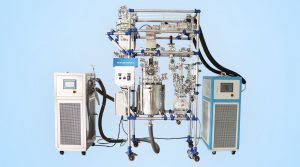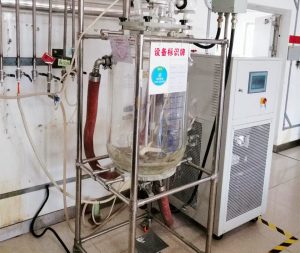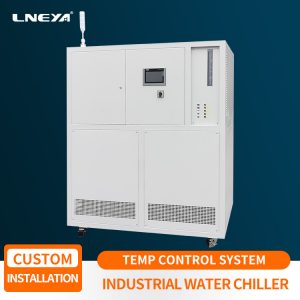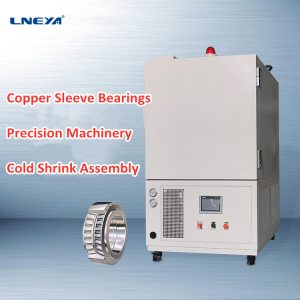Application of Industrial Air-Cooled Chiller in Chemical Industry
Industrial air-cooled chillers are applicable to glass reactors, metal reactors and bioreactors for temperature control. In the field of chemistry and pharmacy, air-cooled chillers usually carry out necessary temperature control together with the chemical reaction of the material itself. Through the temperature change of circulating medium in sheath or coil, the temperature control of materials and the target process temperature of materials can be realized.
For the temperature control of stroke water cooler in pharmaceutical industry, the requirements for selecting temperature control equipment are relatively high. Compared with the common temperature range of – 60 ℃ – 100 ℃, a wider working temperature range is required. At the same time, different chemical reactions require different temperature curves, and the high-temperature and low-temperature integrated units need to work at any different temperature point within this temperature range.
The high and low temperature integrated device for temperature control of air-cooled chiller adopts electric heating, which can quickly increase the temperature of circulating medium. It adopts energy-saving design to realize the regulation of refrigeration capacity, accurately control the temperature of materials, realize the endothermic or rapid response to exothermic of materials, and meet the drug production needs of most industrial occasions.
The characteristics of explosion-proof air-cooled chiller are as follows:
(1) The cascade compression refrigeration cycle of the refrigeration unit can reach a lower temperature. Electric heating can quickly increase the temperature of the circulating medium.
(2) The adjustment of refrigerating capacity change is realized. The refrigerant flow is mainly controlled by PID, and the material temperature is accurately controlled. The traditional method is to use electric heating to offset the cooling of the compressor, which wastes energy.
(3) The combined control of heating and cooling realizes the rapid response to the heat absorbed or released by the material.
(4) The control of material temperature is mainly realized by refrigerant flow control. The refrigerant proportional control valve adopts the valve body of electronic expansion valve. Higher temperature control accuracy can be achieved.
The temperature control of air-cooled chiller consists of refrigeration cycle system, heating cycle system and automatic control system. For areas where the equipment has explosion-proof requirements, the positive pressure explosion-proof cabinet can be customized, which not only meets the explosion-proof requirements, but also reduces the number of explosion-proof parts and reduces the production cost of the whole machine.
Related recommendations
-
What are the main uses of the reactor heating and cooling unit?
1569The reactor heating and cooling device is suitable for high-purity metal, rare substance purification, laboratory environment simulation, magnetron sputtering, vacuum coating and other industries. Large cryogenic pump units can provide a cooling e...
View details -
Different functions of reactor cooling and heating chiller on temperature
1534The cooling and heating chiller of the reactor is a kind of refrigeration machine, because its main component uses a screw compressor, which can be called the low-temperature chiller of the reactor by its name, and is widely used in industrial pro...
View details -
What to do When the High Pressure Alarm of the Chiller?
1988People must pay attention to the maintenance of large-scale temperature control equipment such as industrial water chiller. Sometimes it is normal to encounter high-pressure alarm. We must first find out the causes of high-pressure of the industri...
View details -
Another name for explosion-proof refrigerator: metal cold processing assembly box
1622Wuxi Guanya LNEYA explosion-proof refrigerator adopts single-machine self-folding cryogenic processing technology. It is made of SUS304 stainless steel wire plate with separate low-temperature box, horizontal low-temperature box, inner and outer b...
View details
 LNEYA Industrial Chillers Manufacturer Supplier
LNEYA Industrial Chillers Manufacturer Supplier














